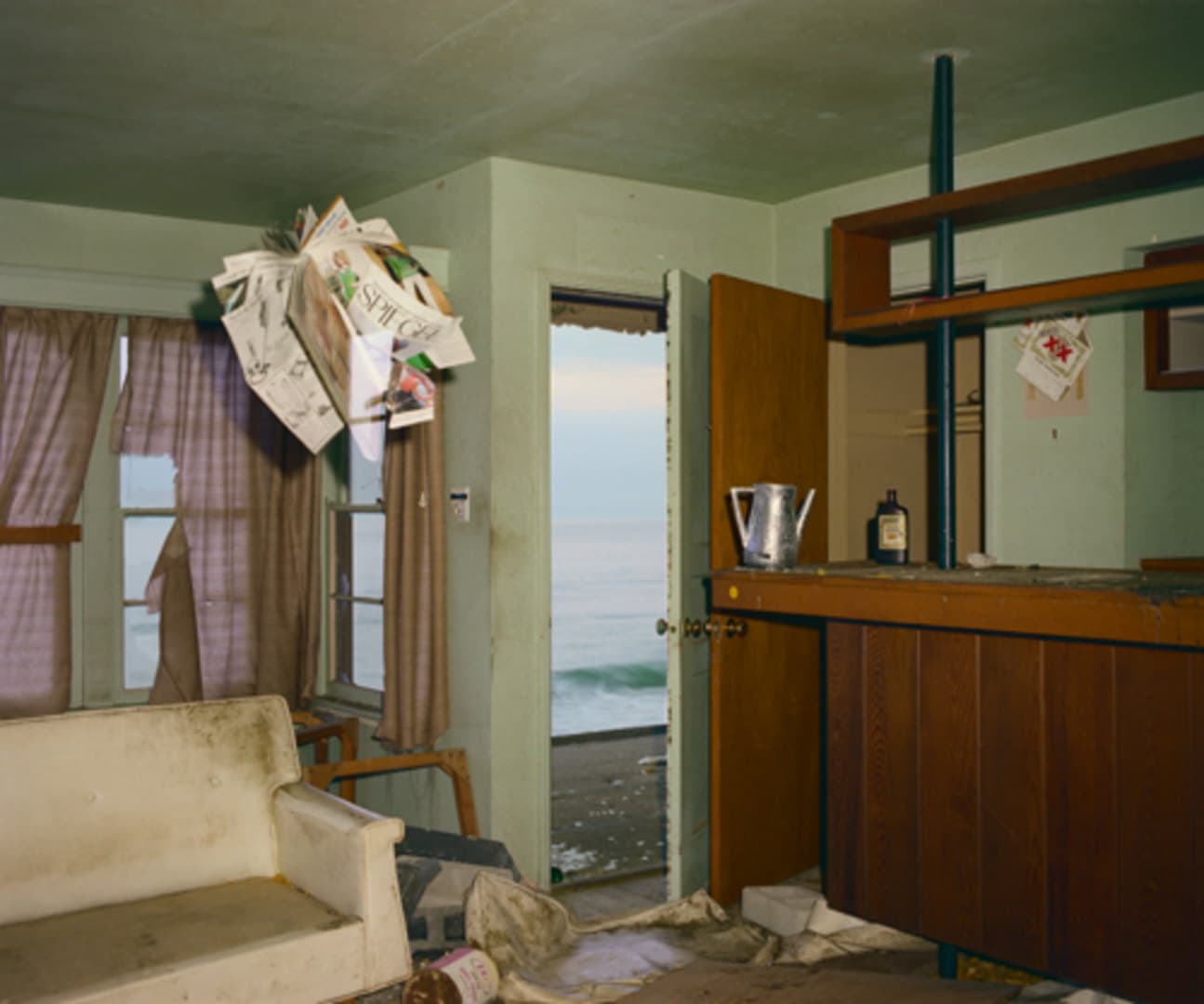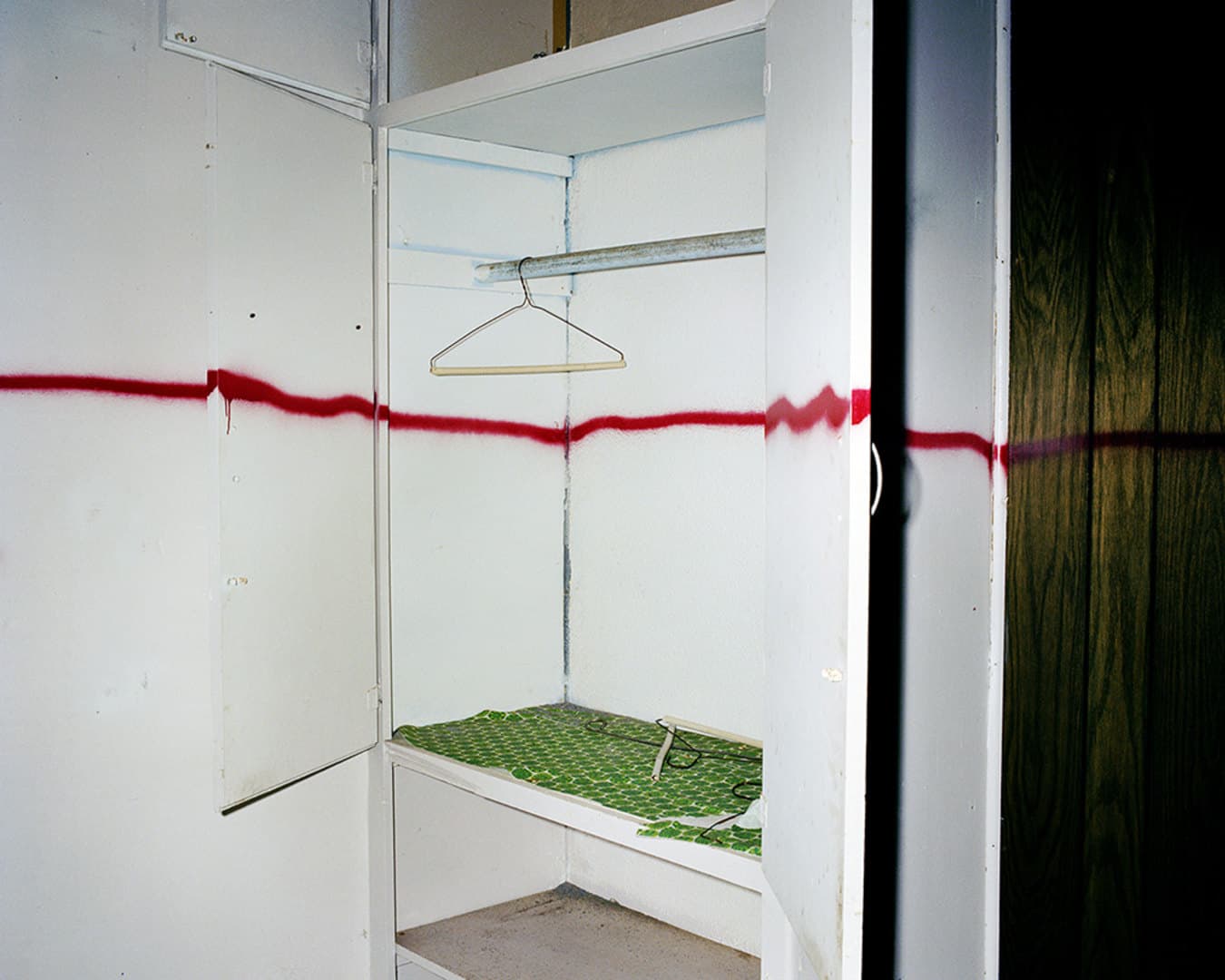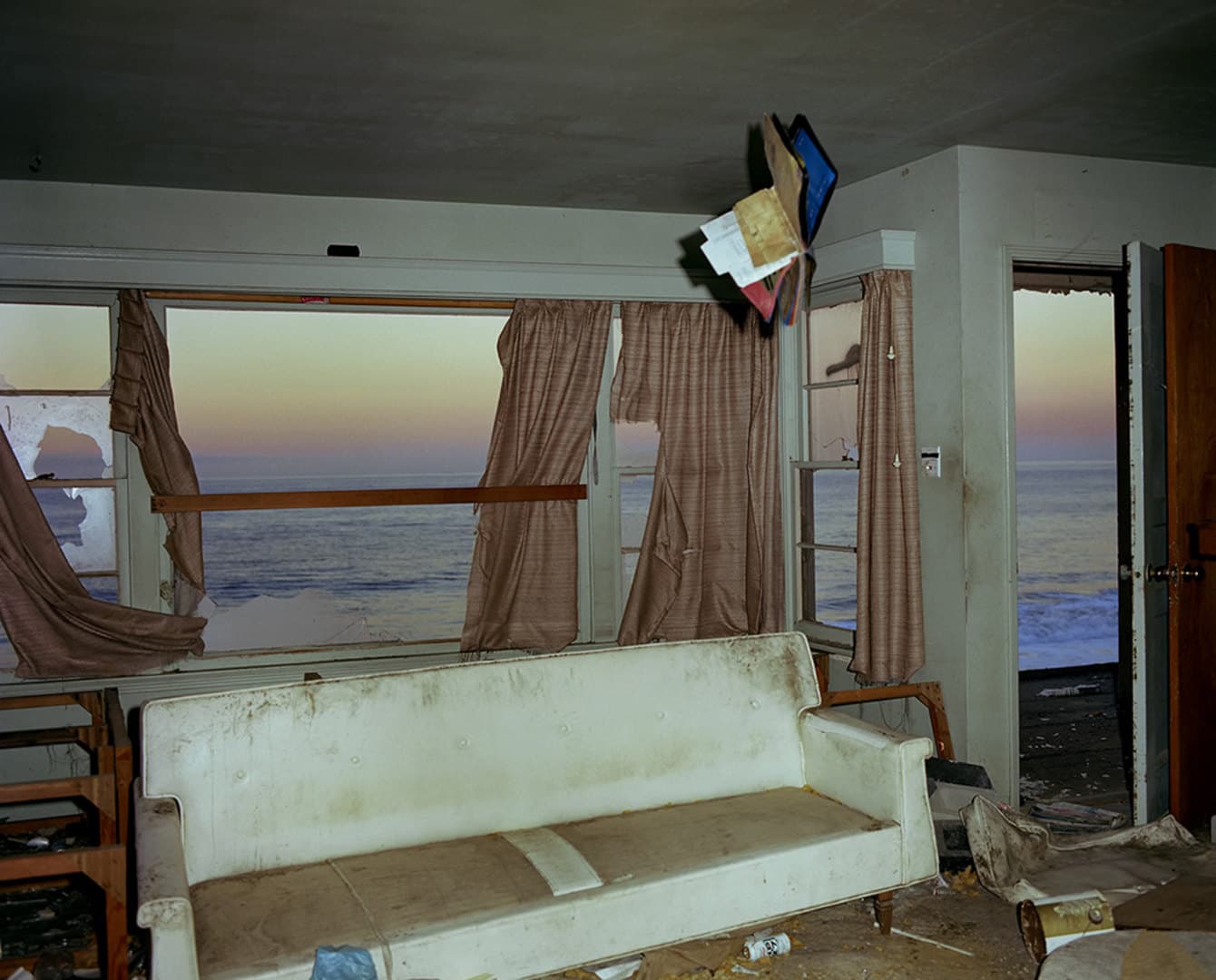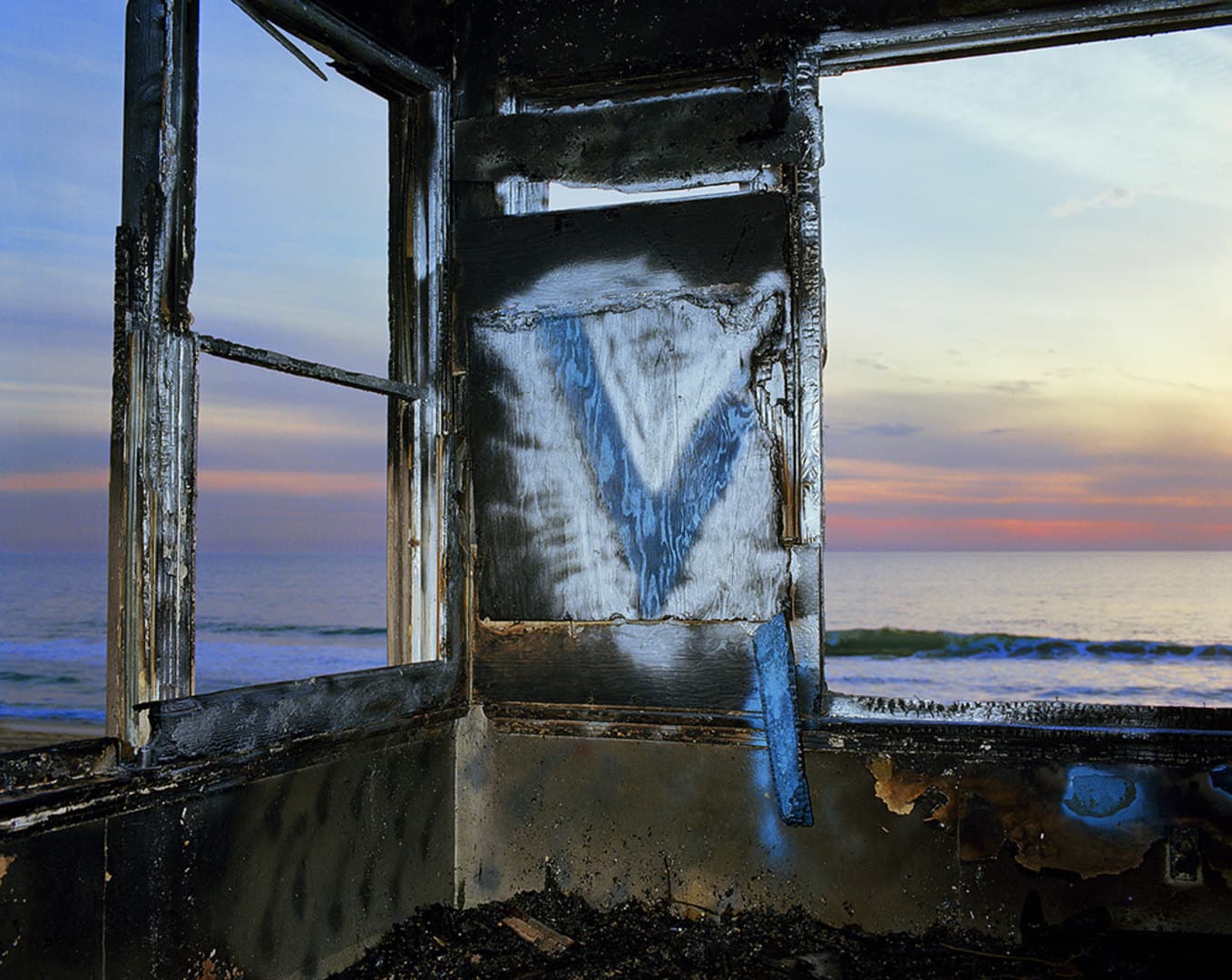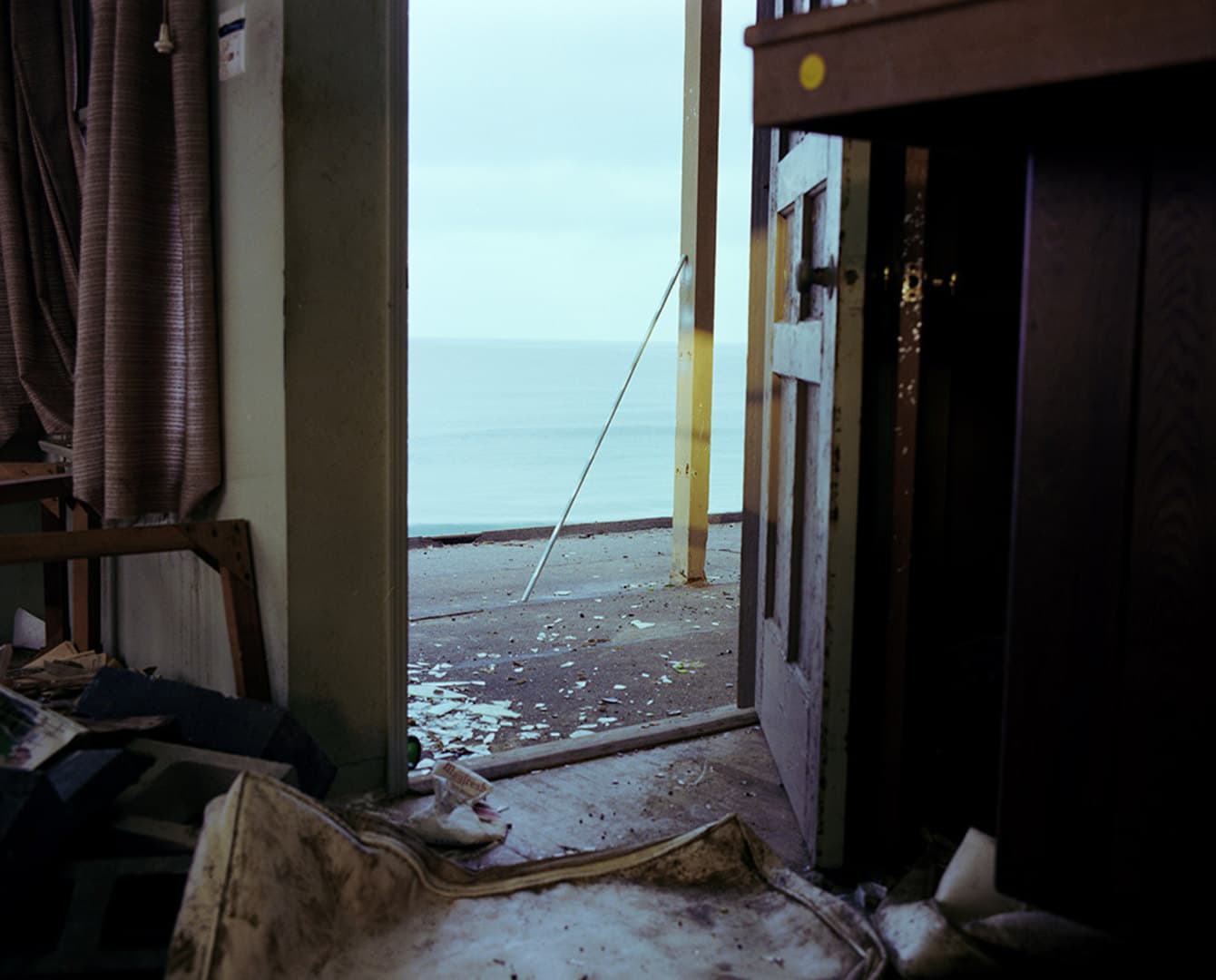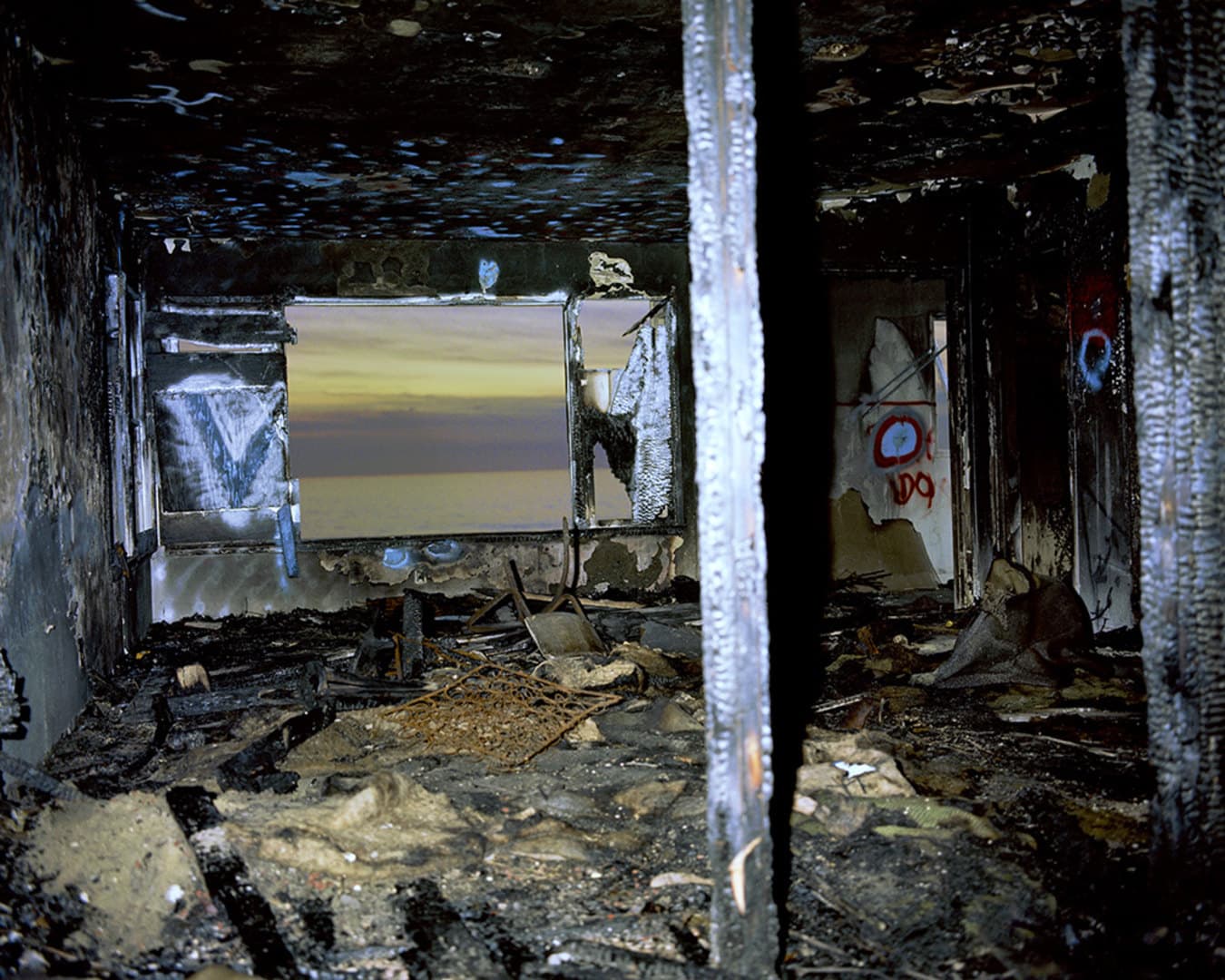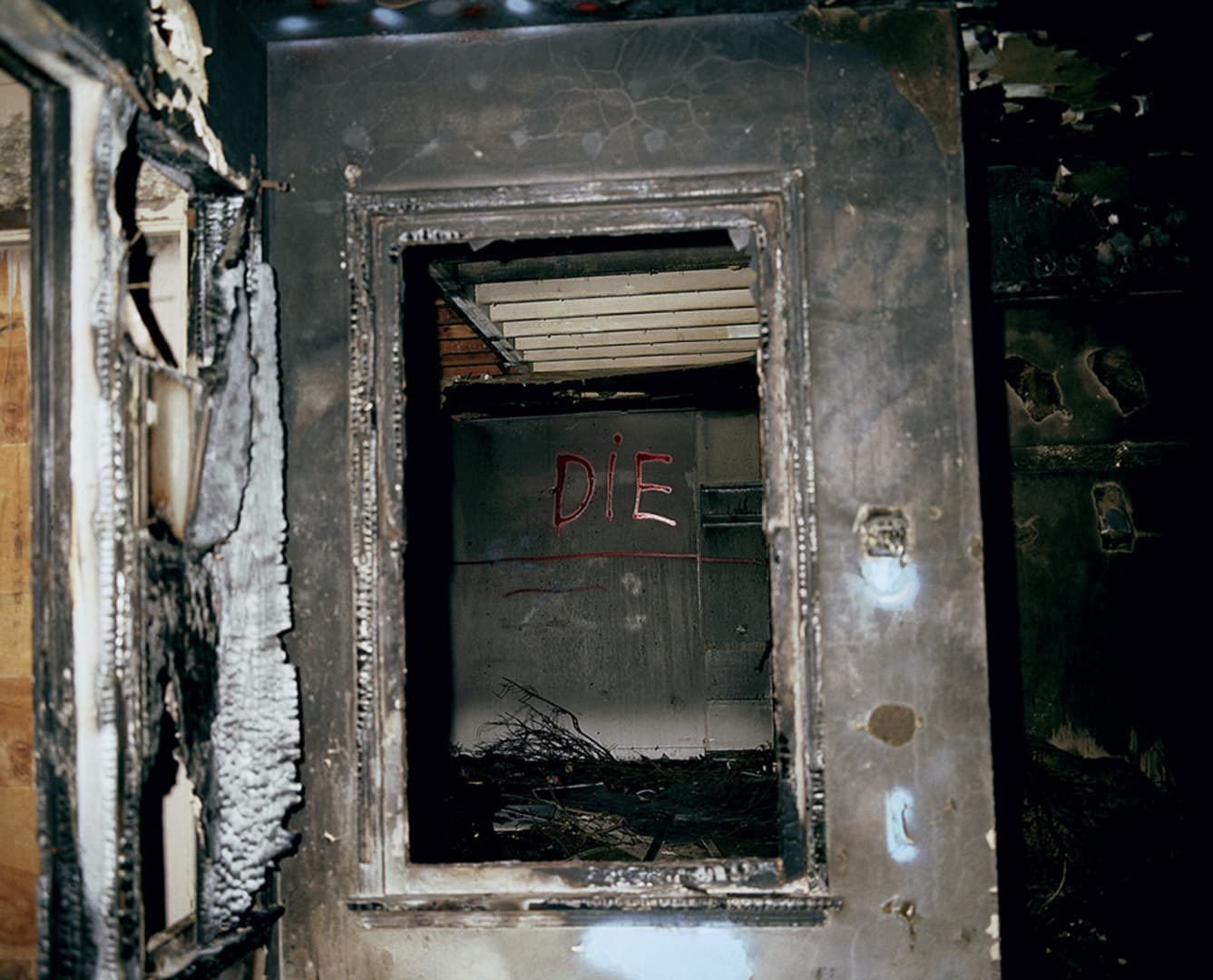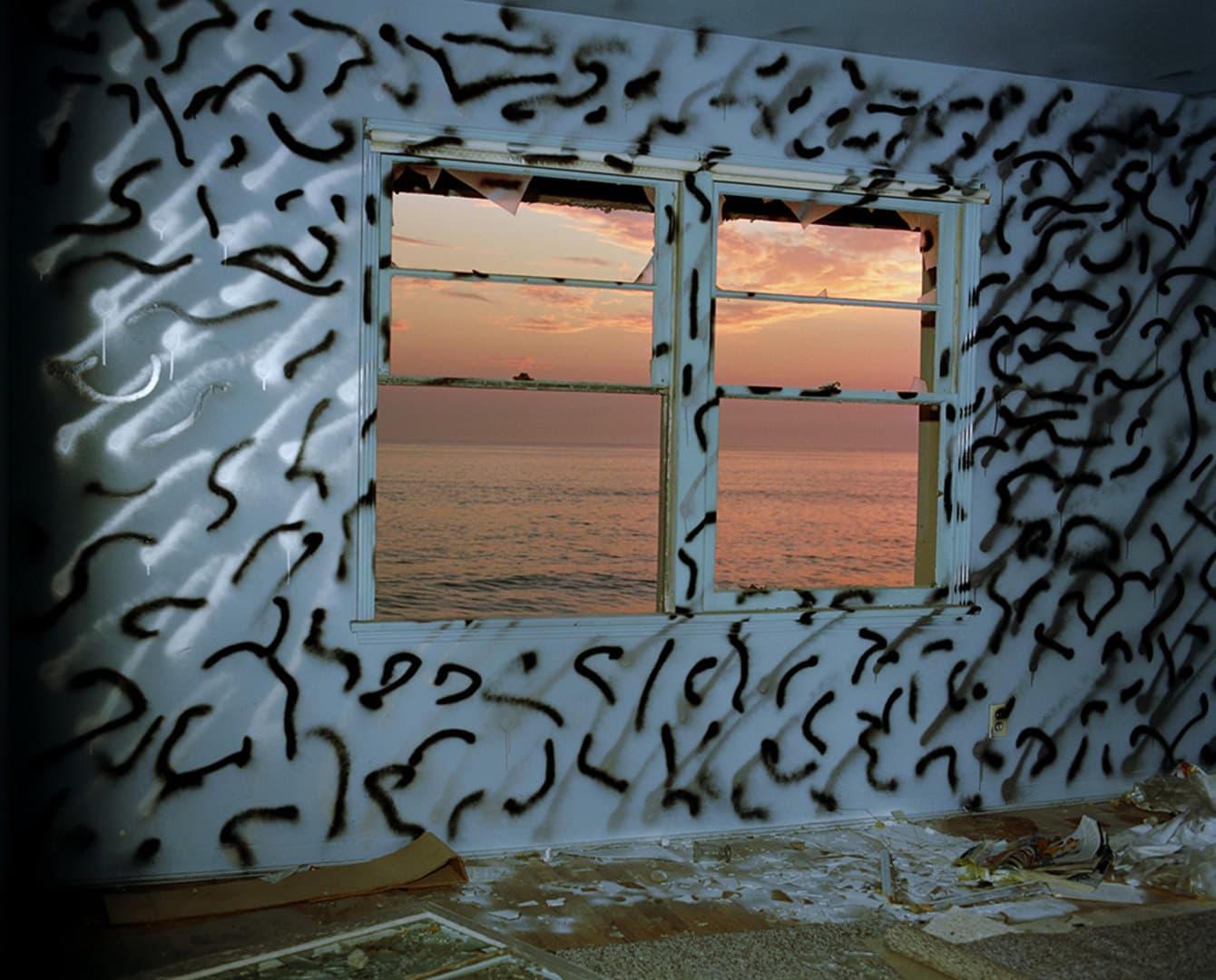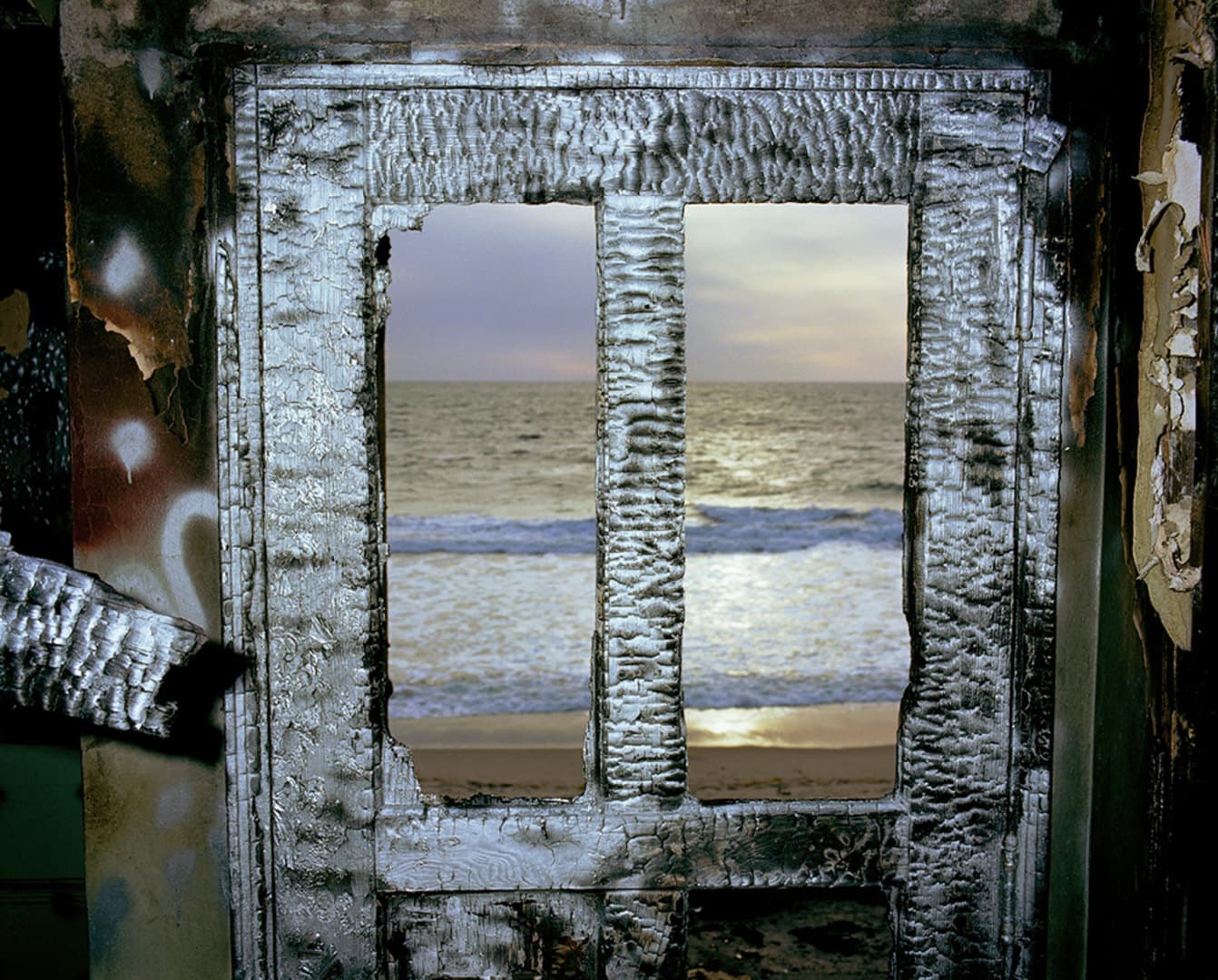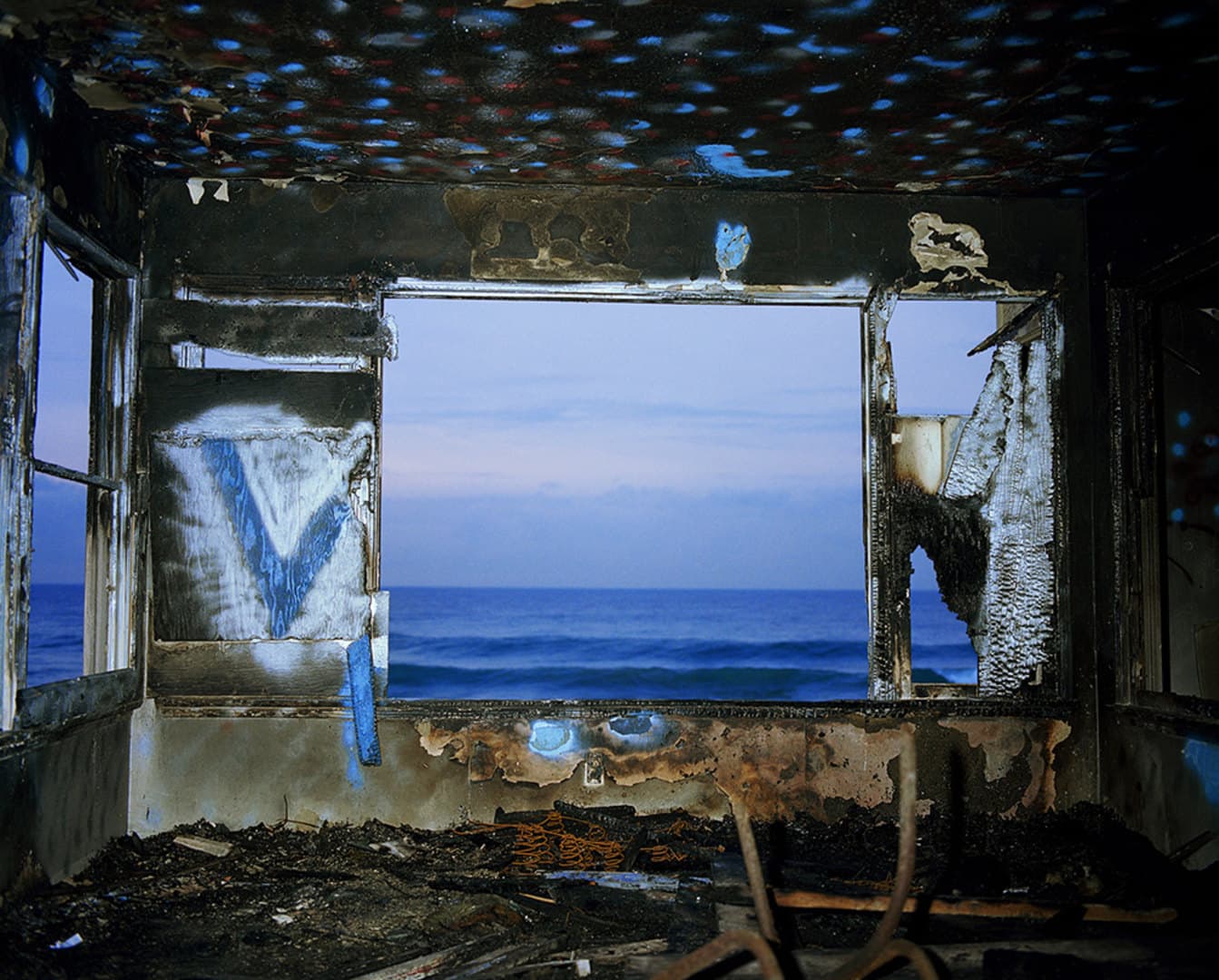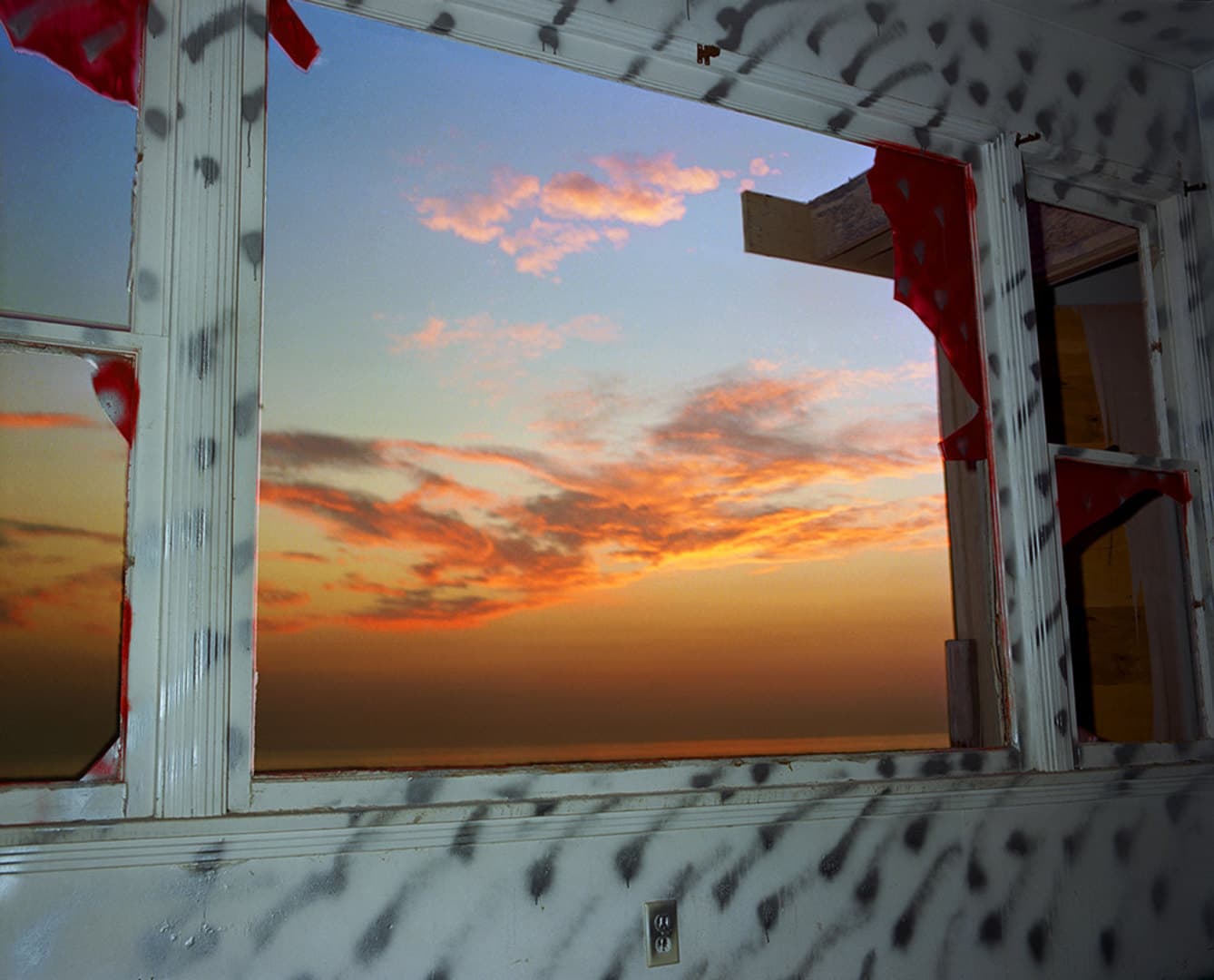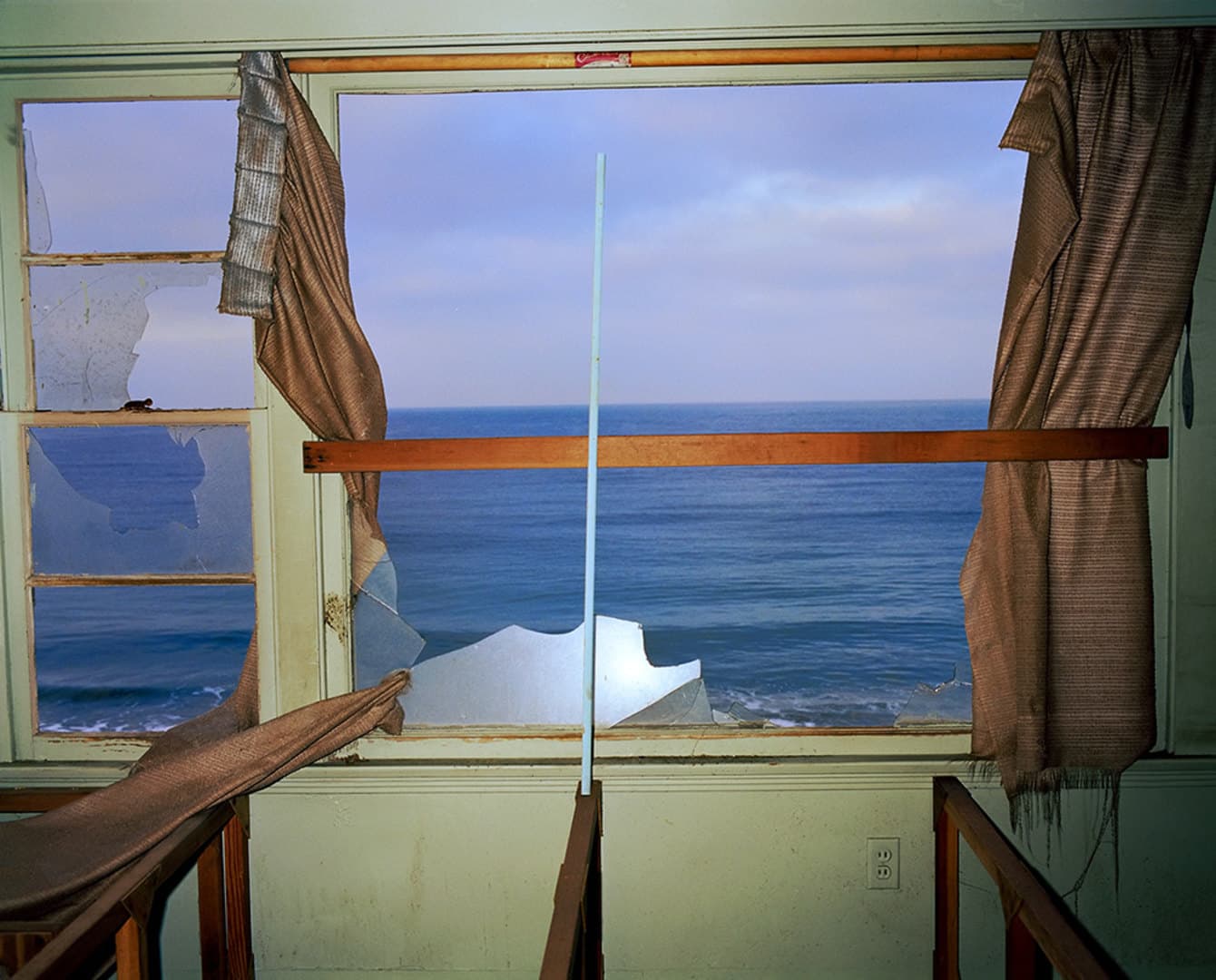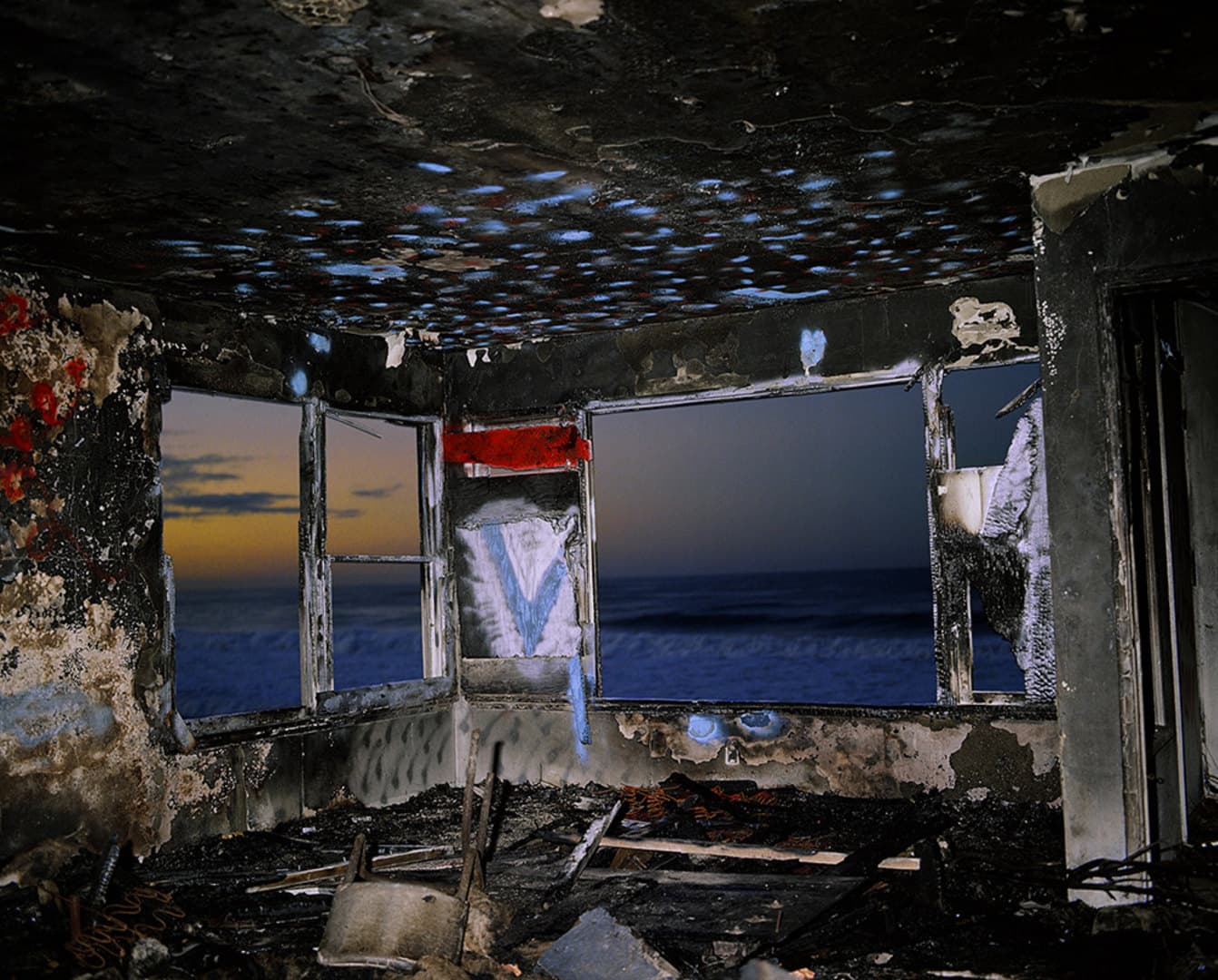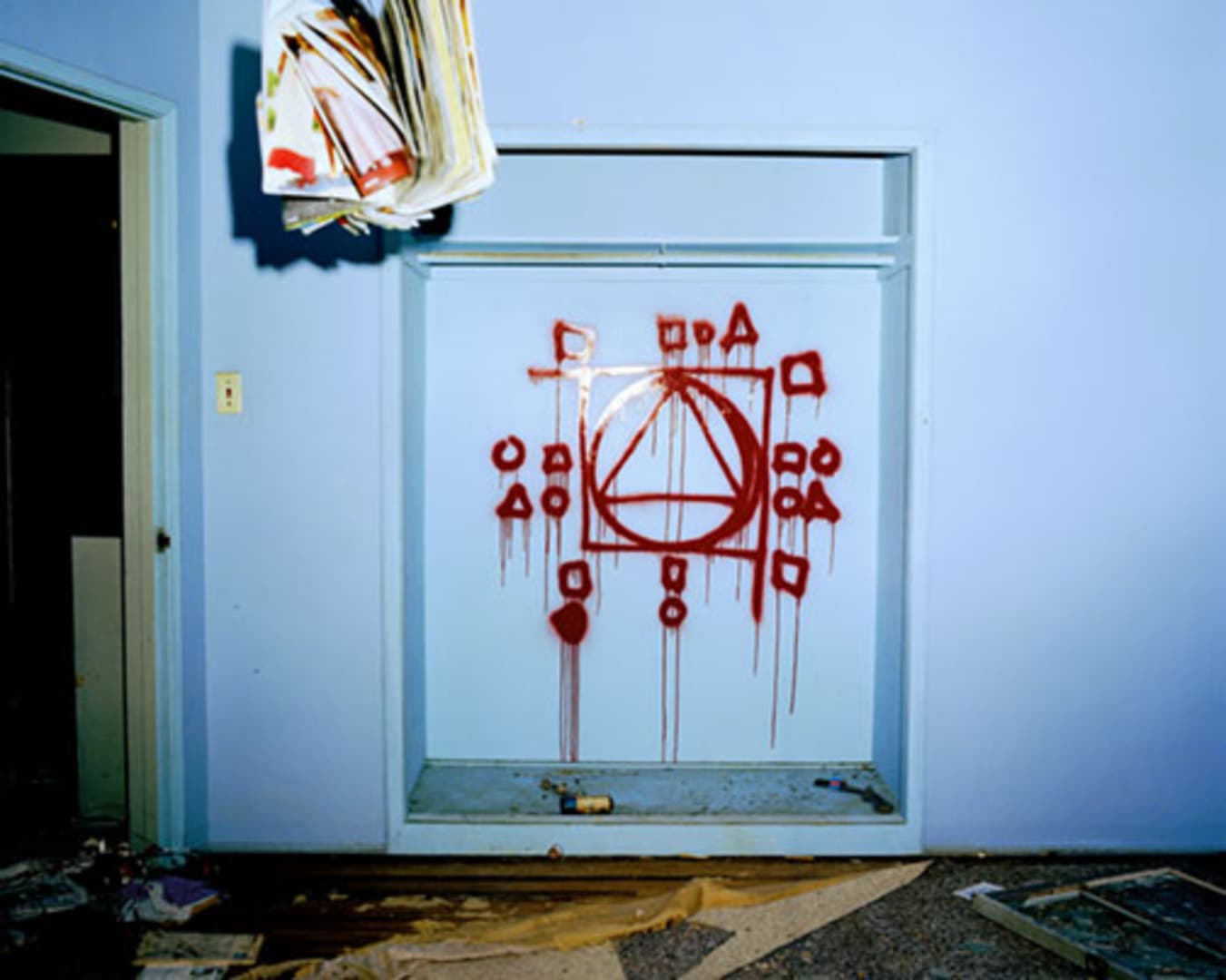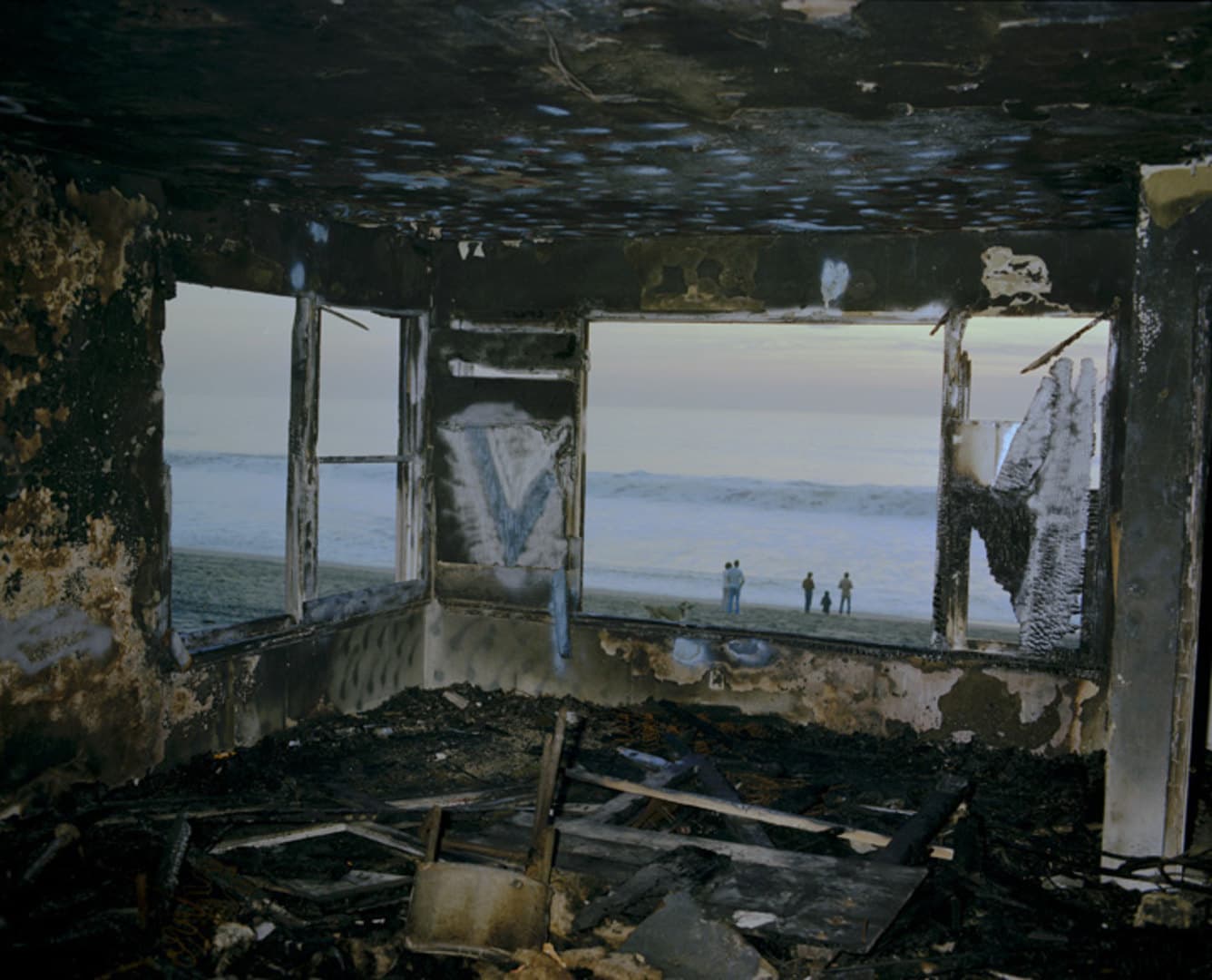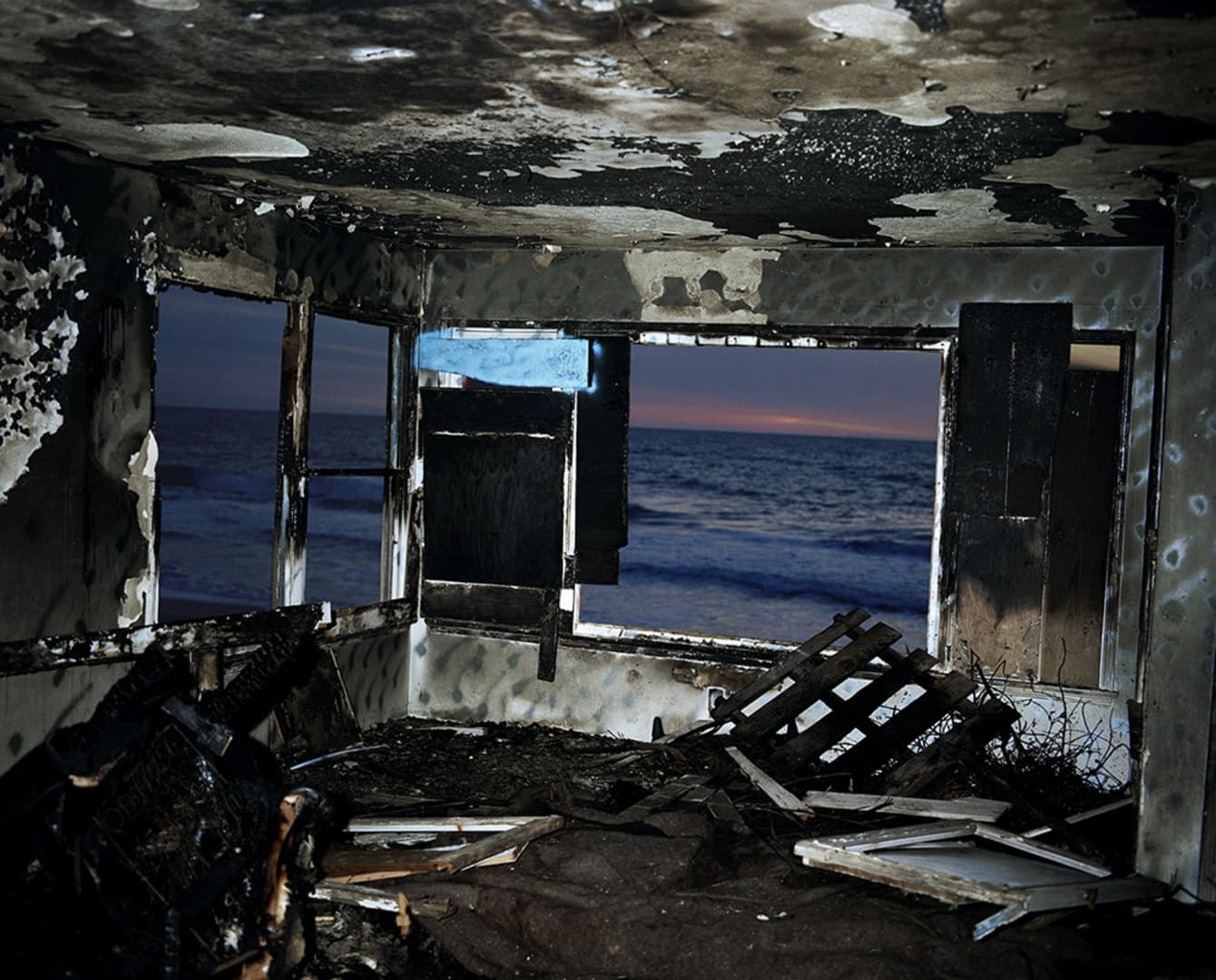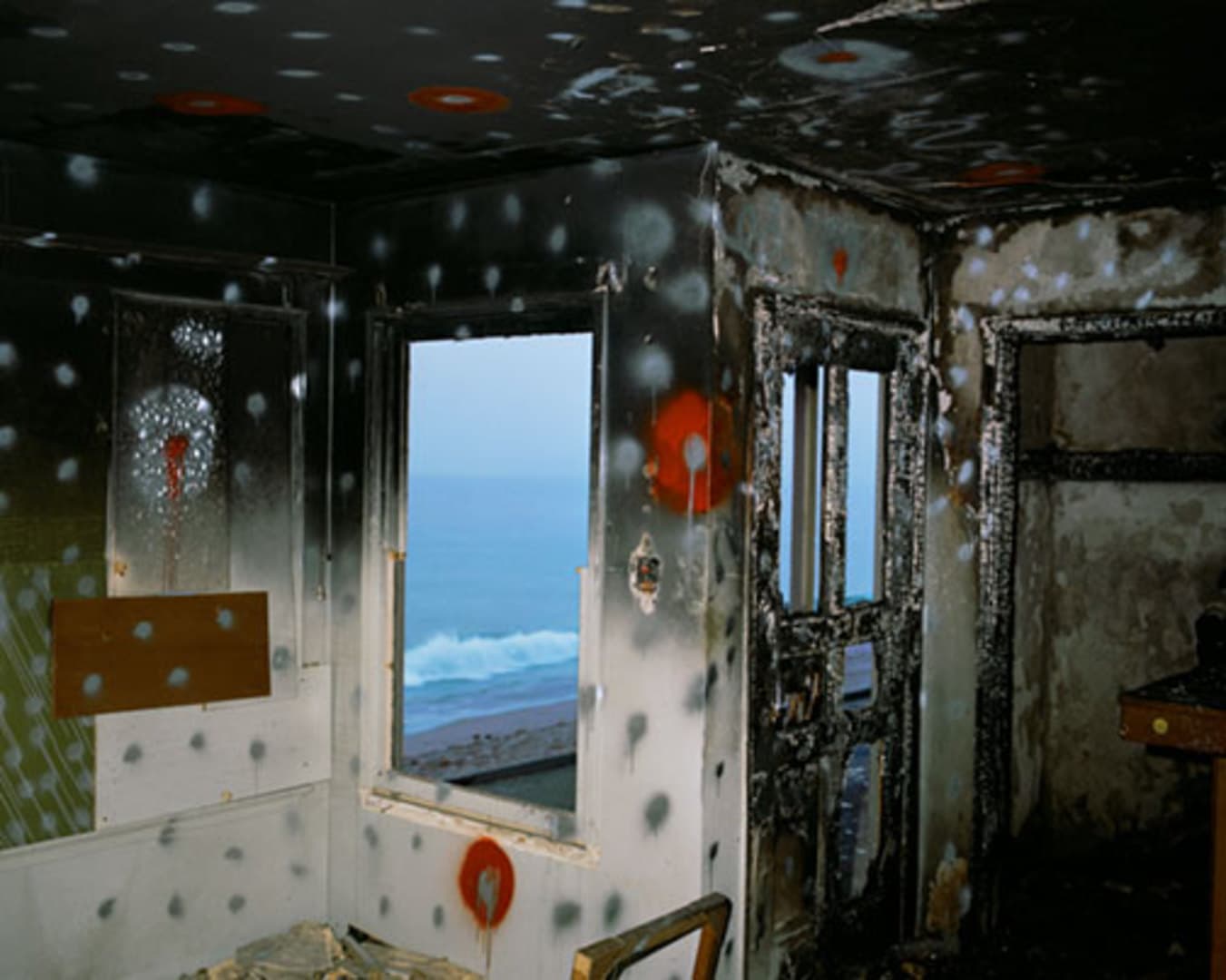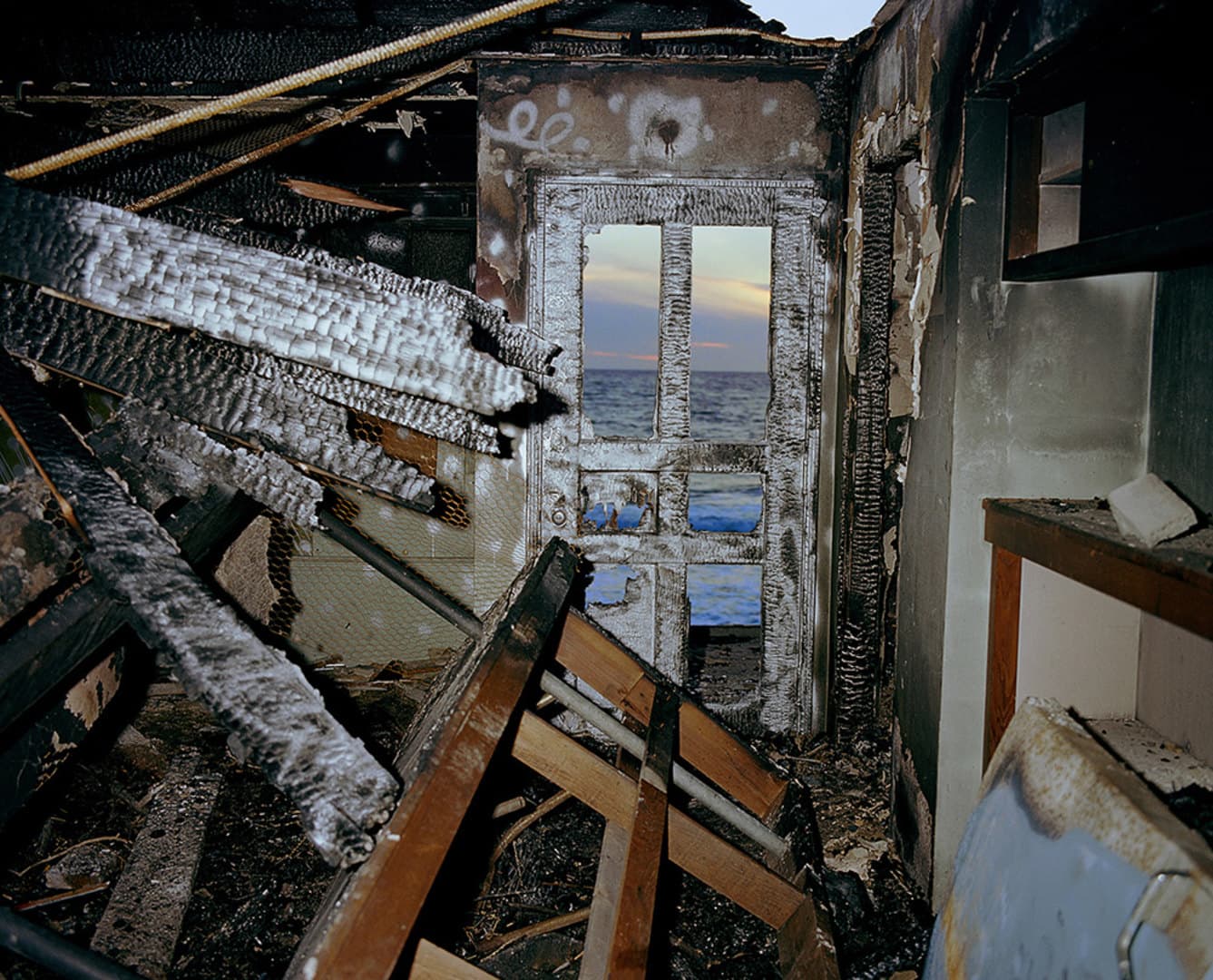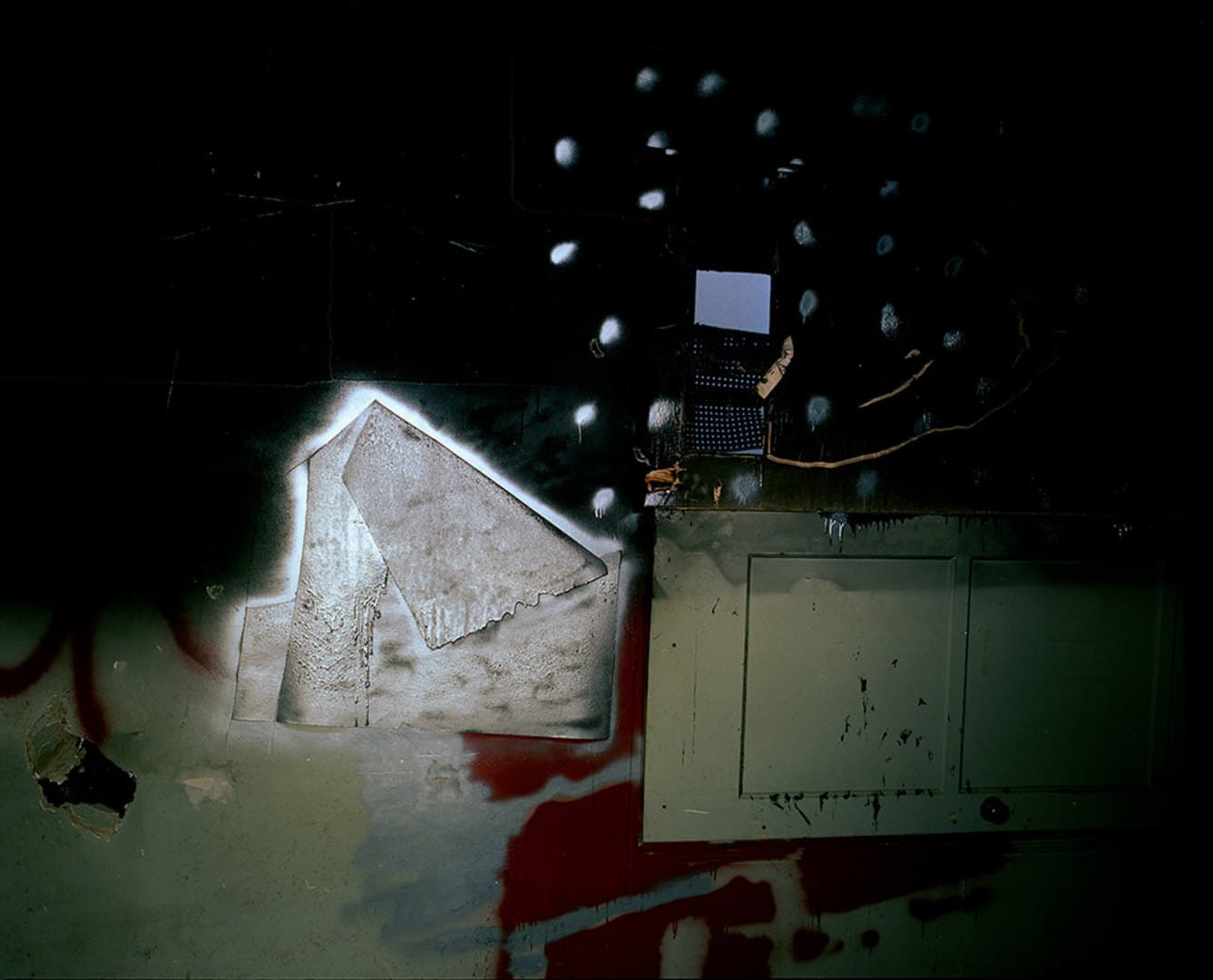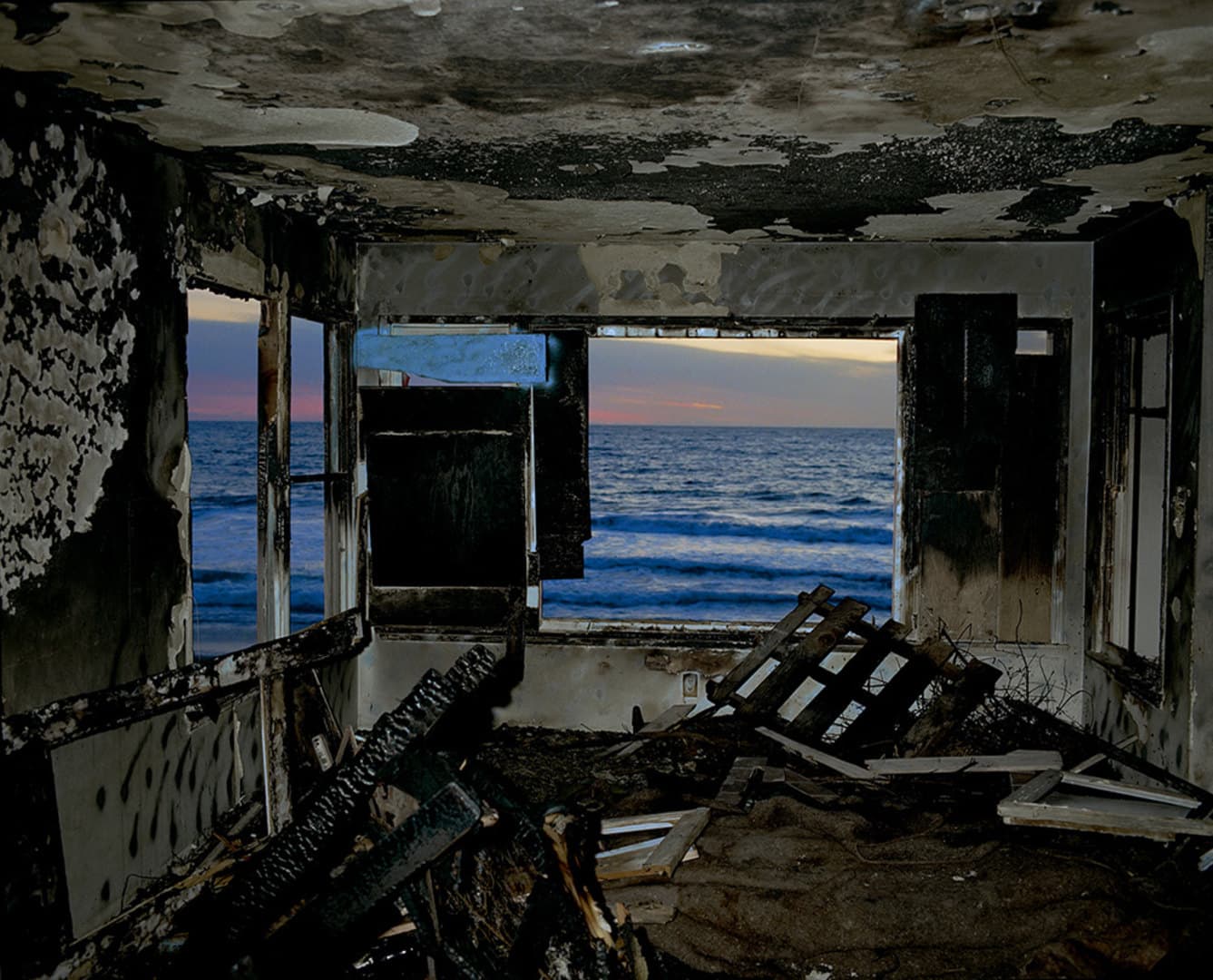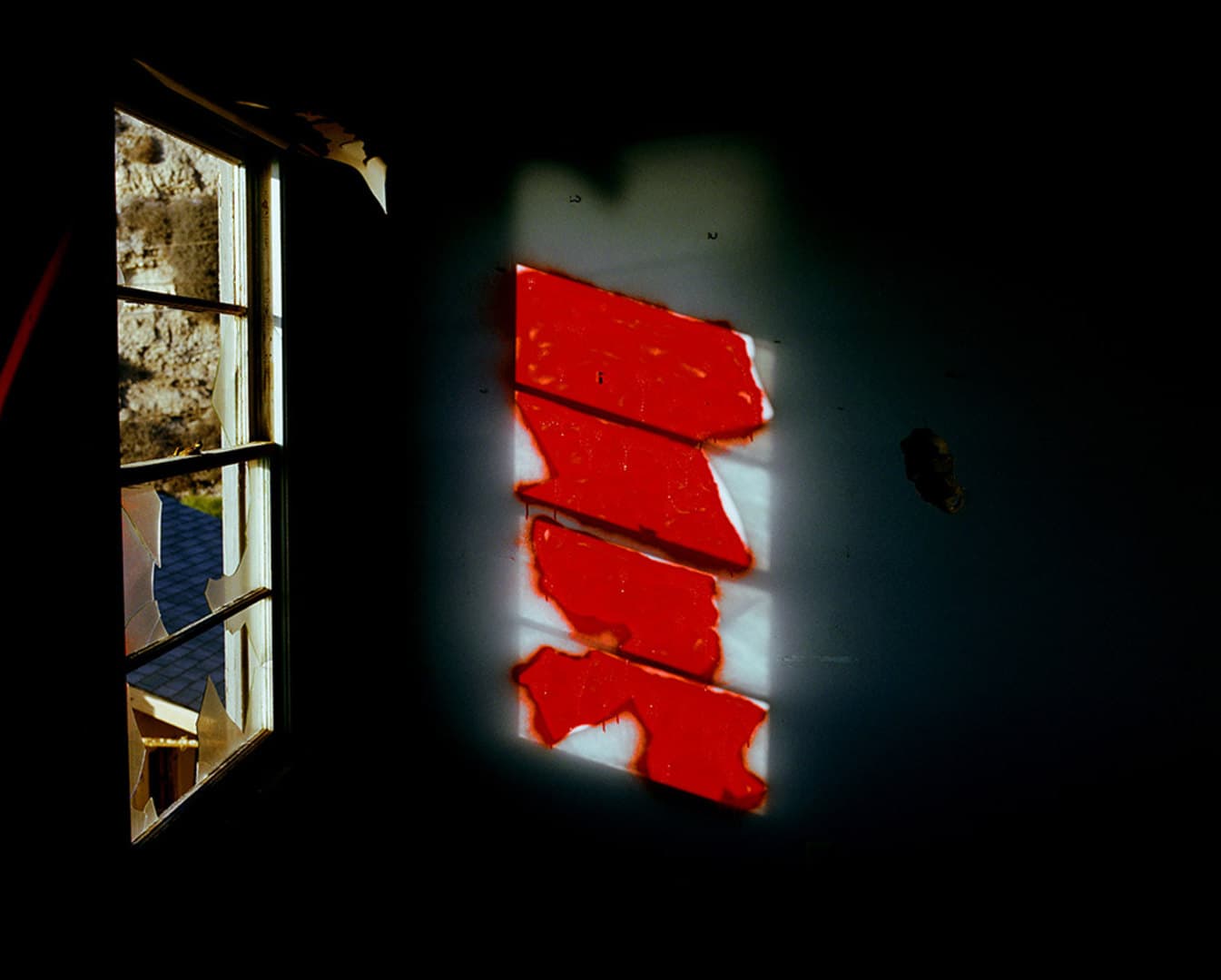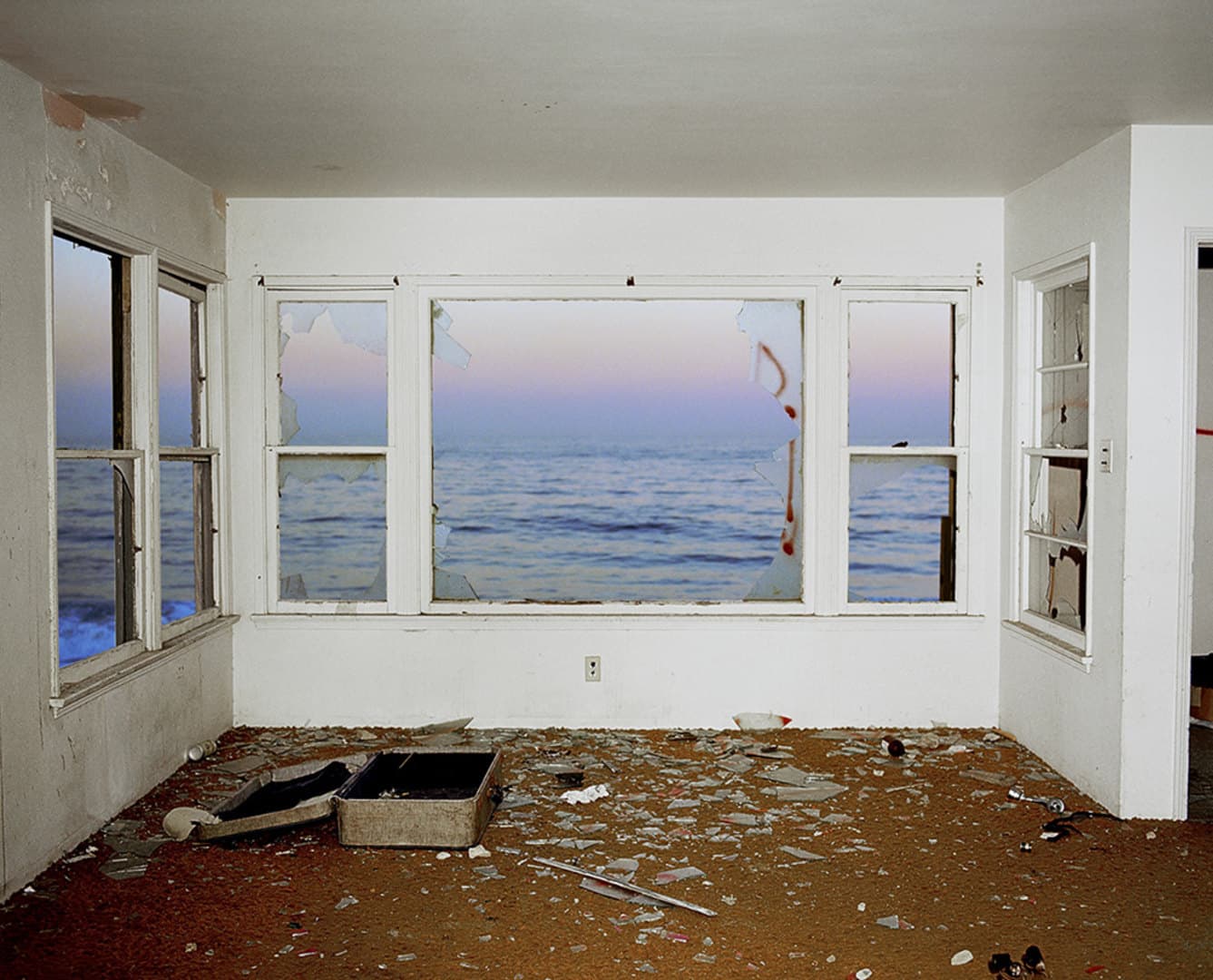Every time that I would return to this house I would notice that it had changed. Often it was a minor change, some rearranged papers and a few empty beer cans in the corner. The change was at times more substantial, like arriving to find the house full of large tree branches that had recently been set on fire and extinguished, water still dripping from the ceiling. On another occasion there might be a strong wind blowing through the window. Once I arrived to find the house gone.
On Initially arriving I would move through the house looking for areas or situations to photograph. If nothing seemed to interest me I would move things around or do some spray painting. The painting was done in much the same way that one might doodle on a piece of paper. At that point I would return to the camera and explore what ever new potentials existed.
These photographs are not meant to be documents of painting, or sculpture, or even of environmental works. When photographing the space I saw my painting as only an aspect of what was there. The painting did allow me to explore my own gestures. However, it can not be isolated from the broken glass on the floor or a curtain being blown by the wind. No element is of greatest importance. I am most satisfied when the line between evidence of my actions and what is already there is not distinct. These photographs are the product of my involvement with an evolving situation. The house evolving in a primarily linear way toward it’s ultimate disintegration, the ocean and light evolving and changing in a cyclical and regenerative manner. My acts, my painting, my photographing, my considering, are part of, not separate from, this process of evolution and change. These photographs are not so much about this process as they are remnants from it. My participation was not so much one of intellectual consideration as one of visceral involvement.
John Divola, 1980

